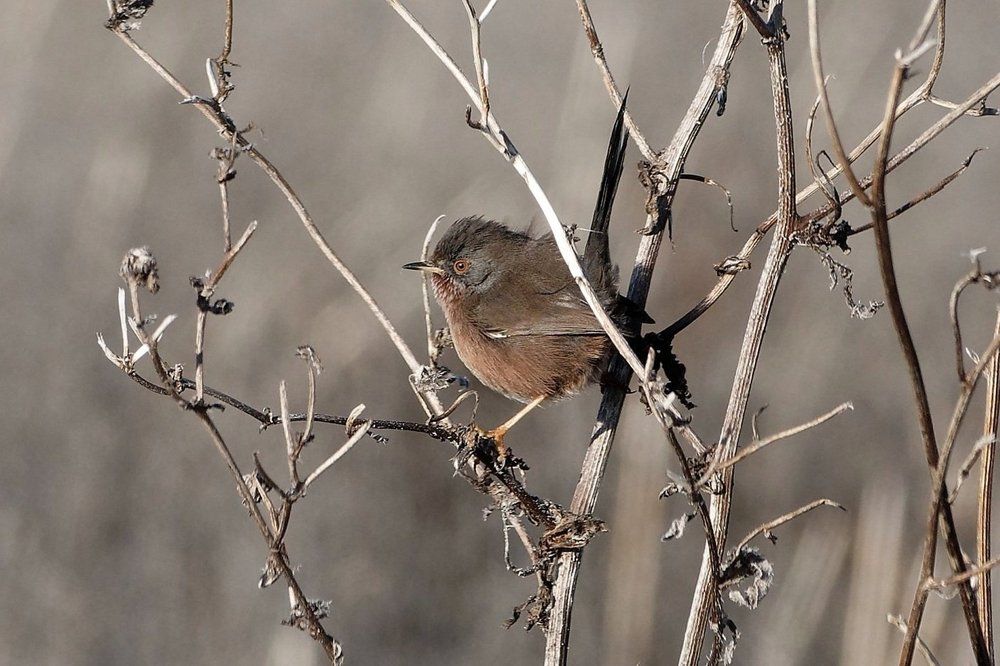Species Focus: the Dartford Warbler
By Richard Grimmet - 23 February 2023

People and places across the world are connected by the flight paths of millions of birds. These migrating birds connect places where they breed, where they stop-over on their journeys along so-called migration flyways, and where they spend the winter.
The common cuckoos that breed here in Sussex, for example, migrate through the Mediterranean, and spend our winter in tropical forests of West and Central Africa. These long migrations help birds find food all year round. But this creates real challenges for joined-up conservation efforts.
Some species, on the other hand, make much shorter migrations and the connections are closer to home. One such bird is the Dartford warbler, a long-tailed, perky little warbler with maroon underparts and a bright red eye and eye-ring. It breeds among the heather and gorse of Ashdown Forest, and it’s thought to have its own little flyway from these heaths down to the Sussex coast and potentially across the Channel.
The Dartford warbler is one of the defining species for the conservation of this important area. It’s easily overlooked, sometimes giving itself away by its scratchy song and occasional song-flight. If conditions are right, pairs can raise two, even three broods each summer. Once down to only 10 pairs in the whole of the UK, habitat protection and management, and warmer winters, now mean the UK population is in the thousands.
Like so many other species, Dartford warblers need suitable habitat to overwinter and to escape from the cold. In the past, they were a very occasional visitor to the area known as Climping Gap to the west of Littlehampton, perhaps as they passed en-route to northern France. But now suitable winter habitat is being created and restored on the coast here. It’s just a short hop of 30 miles from Ashdown to the south-west as the warbler flies.
So far this winter up to six Dartford warblers have been recorded at Climping, keeping company with another heathland bird, the stonechat. Their inquisitive nature means they can’t resist perching out for a brief moment to eye their surroundings, allowing sharp-eyed local birders to get a rare photograph.
Without intensive research we won’t know for sure where the Ashdown Forest Dartford warblers disperse to, but it is nice to know that Climping Gap is now providing somewhere suitable. It highlights the potential of joined-up conservation and the creation of wildlife corridors such as those being established by the Weald to Waves initiative.
As the adage goes, ‘If you build it, they will come.’ It might make the difference between surviving the winter or not for the little Dartford warblers, stonechats and other birds using these new habitats.
By Richard Grimmett
Image of Dartford Warbler by Bola Akinola

